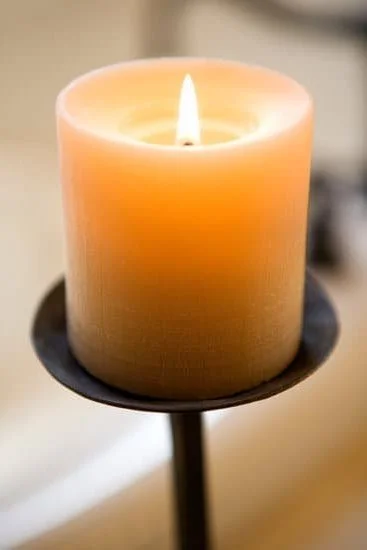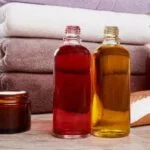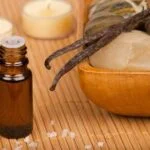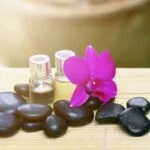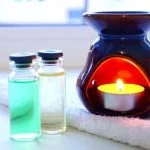Aromatherapy is the use of aromatic plants and their essential oils to promote physical and psychological well-being. It involves using natural plant extracts to enhance mood, reduce stress, and alleviate various physical ailments. Aromatherapy has gained popularity in recent years as people seek alternative methods for relaxation and healing. In this article, we will explore the benefits of aromatherapy herbs and provide a comprehensive list of top herbs used in aromatherapy practices.
The practice of aromatherapy dates back to ancient civilizations such as the Egyptians, Greeks, and Chinese who used aromatic plants for medicinal and religious purposes. In modern times, aromatherapy has become more accessible and is widely used in holistic medicine, spa treatments, and even in household products. The use of aromatherapy herbs has been linked to various health benefits including improved sleep quality, reduced anxiety, and enhanced mental clarity.
Aromatherapy herbs come in different forms such as essential oils, carrier oils, and hydrosols – each with their own unique properties and uses. From Lavender to Eucalyptus to Tea Tree, these herbs have become popular choices for those seeking natural remedies for their well-being. In the following sections, we will delve into the history of aromatherapy and explore the different types of aromatic herbs used in this practice.
History of Aromatherapy
Aromatherapy has been used for centuries as a natural way to promote health and well-being. The use of aromatic plants and herbs for therapeutic purposes dates back to ancient civilizations such as the Egyptians, Greeks, and Romans. These cultures recognized the healing properties of certain plants and incorporated them into their daily lives. In modern times, aromatherapy has gained popularity as people seek natural alternatives to promote relaxation, reduce stress, and improve overall wellness.
The history of aromatherapy can be traced back to the early civilizations where aromatic herbs were used for medicinal, spiritual, and cosmetic purposes. Ancient texts from China, India, and Egypt provide evidence of the use of essential oils derived from plants for various ailments. The practice of using aromatic herbs continued through the Middle Ages and Renaissance period where herbal distillation techniques advanced, leading to the production of essential oils in larger quantities.
In contemporary times, aromatherapy has evolved into a holistic therapy that utilizes a wide range of aromatic products including essential oils, carrier oils, and hydrosols. Essential oils are highly concentrated plant extracts that are derived through steam distillation or cold pressing methods.
Carrier oils such as coconut oil or almond oil are used to dilute essential oils for topical application. Hydrosols are formed as a byproduct during the essential oil distillation process and are milder than essential oils, making them suitable for direct skin application without dilution.
| Historical Event | Significance |
|---|---|
| Ancient Egyptian Use | Evidence of aromatic herbs being used for medicinal purposes |
| Renaissance Distillation Techniques | The advancement in herbal distillation led to mass production of essential oils |
| Modern Aromatherapy Practices | Aromatherapy has evolved into a holistic therapy using a variety of aromatic products such as essential oils, carrier oils, and hydrosols. |
Different Types of Aromatherapy Herbs
Aromatherapy is a holistic healing treatment that uses natural plant extracts to promote health and well-being. Essential oils, carrier oils, and hydrosols are the three main types of aromatherapy herbs used in this practice.
Essential oils are highly concentrated plant extracts that have been used for centuries for their therapeutic properties. They are extracted through processes like distillation or expression from the flowers, leaves, stems, roots, or other parts of plants. These oils are often used in aromatherapy for their soothing and uplifting effects on the body and mind.
Carrier oils are used to dilute essential oils before applying them to the skin in massage and aromatherapy treatments. They are gentle and have their own therapeutic properties that can enhance the benefits of essential oils. Common carrier oils include coconut oil, jojoba oil, almond oil, and olive oil.
Hydrosols, also known as floral waters, are produced during the steam distillation of plants to create essential oils. They contain traces of essential oils as well as water-soluble components of the plant. Hydrosols can be used for skincare, as a facial toner, or in room sprays for their subtle fragrance and therapeutic benefits.
Understanding the different types of aromatherapy herbs – essential oils, carrier oils, and hydrosols – is essential for incorporating them into an aromatherapy practice effectively. By using these natural remedies properly, individuals can experience various physical and emotional benefits tied to these powerful herbs.
Top Aromatherapy Herbs List
The use of aromatherapy herbs has been an age-old practice that dates back to ancient civilizations. These natural extracts have been utilized for their therapeutic properties, offering a wide range of benefits, from stress relief to improved sleep. Among the extensive array of aromatherapy herbs available, some stand out for their effectiveness and versatile uses.
Lavender
Lavender is perhaps one of the most popular aromatherapy herbs known for its calming and soothing properties. It is often used to promote relaxation and alleviate anxiety, making it an excellent choice for addressing sleep-related issues.
Peppermint
Known for its invigorating and refreshing aroma, peppermint essential oil is often used in aromatherapy to boost energy levels and mental clarity. It can also help soothe headaches and relieve muscle tension when applied topically.
Eucalyptus
Eucalyptus essential oil is renowned for its respiratory benefits due to its ability to clear nasal congestion and relieve sinus symptoms. Its refreshing scent makes it a popular choice for spa treatments and inhalation therapy.
These are just a few examples from an extensive aromatherapy herbs list, each with unique properties that cater to various wellness needs. Whether it’s promoting relaxation, alleviating pain, or enhancing mental focus, these essential oils offer natural solutions that have been cherished throughout history for their potency and versatility in holistic healing practices.
How to Use Aromatherapy Herbs
Aromatherapy herbs can be used in various ways to enjoy their therapeutic benefits. Here are some popular methods for using aromatherapy herbs:
- Diffusion: One of the most common ways to use aromatherapy herbs is through diffusion. Whether using a diffuser or simply adding a few drops of essential oil to a bowl of hot water, diffusion allows the aroma of the herbs to fill the air, creating an inviting and soothing atmosphere.
- Topical Application: Aromatherapy herbs can also be applied directly to the skin, although they should always be diluted with a carrier oil before doing so. This method is ideal for targeted relief from ailments such as sore muscles, headaches, and skin conditions.
- Inhalation: Inhaling the aroma of aromatherapy herbs is another effective way to experience their benefits. This can be achieved by simply inhaling the scent directly from the bottle or by adding a few drops to a cotton ball or handkerchief and taking deep breaths.
- Massage: Combining aromatherapy herbs with massage provides both physical and emotional benefits. When added to a carrier oil, such as jojoba or coconut oil, aromatherapy herbs can enhance the therapeutic effects of massage, promoting relaxation and stress relief.
Each method offers its own unique experience and may be preferred based on personal preferences and needs.
Using these methods allows individuals to enjoy the holistic benefits that aromatherapy herbs have to offer. Whether seeking stress relief, improved sleep, or enhanced mental clarity, incorporating these methods into daily routines can contribute to overall well-being. It is important to familiarize oneself with safe practices when using aromatherapy herbs as they are potent substances that should be respected and used mindfully.
Benefits of Aromatherapy Herbs
Aromatherapy has been used for centuries to promote physical, mental, and emotional well-being. The use of aromatherapy herbs, such as essential oils, carrier oils, and hydrosols, has become increasingly popular due to their natural healing properties. These herbs offer a wide range of benefits including stress relief, relaxation, pain relief, improved sleep, and mental clarity.
Stress Relief and Relaxation
One of the most popular uses of aromatherapy herbs is for stress relief and relaxation. Essential oils such as lavender, chamomile, and ylang-ylang are known for their calming properties and can help reduce feelings of anxiety and tension. The gentle aroma of these herbs can create a soothing environment that promotes overall relaxation.
Pain Relief
Aromatherapy herbs are also used to alleviate various types of pain. Peppermint oil is commonly used to relieve headaches and migraines due to its cooling effect on the skin. Eucalyptus oil is often used to soothe muscle aches and joint pain. These herbs have analgesic properties that can provide natural relief from discomfort.
Improved Sleep and Mental Clarity
Many people turn to aromatherapy herbs to help improve the quality of their sleep. Certain essential oils like bergamot and rosemary can help calm the mind and promote restful sleep. Additionally, inhaling the scent of these herbs can also enhance mental clarity and focus, making them beneficial for those seeking an energy boost during the day.
Overall, incorporating aromatherapy herbs into daily routines can provide numerous benefits for both the mind and body. With proper use and understanding of safety guidelines, these natural remedies can be valuable tools for enhancing overall well-being.
Safety Tips for Aromatherapy
When it comes to using aromatherapy herbs, safety should always be a top priority. While these natural remedies offer a wide range of benefits, it is important to use them with caution and adhere to proper guidelines. Here are some safety tips to keep in mind when using aromatherapy herbs:
Dilution Ratios
Essential oils are highly concentrated and can cause skin irritation or other adverse reactions if used undiluted. It is essential to dilute essential oils with a carrier oil before applying them to the skin. The standard dilution ratio for adults is 2% (or 12 drops of essential oil per ounce of carrier oil), but this may vary depending on the individual’s age, health condition, and the specific essential oil being used.
Contraindications
Certain essential oils may not be suitable for everyone. Individuals who are pregnant, breastfeeding, have certain medical conditions, or are taking specific medications should consult with a healthcare professional before using aromatherapy herbs. Some essential oils can interfere with medications or exacerbate certain health issues, so it is crucial to be aware of any contraindications.
Potential Side Effects
While natural, aromatherapy herbs can still cause side effects in some individuals. These may include skin irritation, allergic reactions, respiratory issues, or headaches. It is important to perform a patch test before using any new essential oil and discontinue use if any adverse reactions occur.
By following these safety tips for using aromatherapy herbs, individuals can enjoy the benefits of these natural remedies while minimizing the risk of negative outcomes. It is always best to educate oneself about the proper use of these powerful substances in order to fully embrace their therapeutic potential without compromising one’s well-being.
Conclusion
In conclusion, the use of aromatherapy herbs offers a natural and holistic approach to health and wellness. From its ancient origins to modern practices, aromatherapy has been recognized for its numerous benefits, including stress relief, relaxation, pain relief, improved sleep, and mental clarity. The top aromatherapy herbs list includes popular choices such as lavender, peppermint, eucalyptus, tea tree, rosemary, chamomile, bergamot, and ylang ylang which can be used in various ways including diffusion, inhalation, topical application or massage.
The power of nature is evident in the potent properties of these aromatherapy herbs. Whether it’s the soothing scent of lavender to promote relaxation or the invigorating aroma of eucalyptus for respiratory support, these herbs have been used for centuries to enhance physical and emotional well-being.
It is important to note that while using aromatherapy herbs can be incredibly beneficial, it is essential to follow safety tips such as proper dilution ratios and being aware of potential contraindications and side effects.
Ultimately, embracing the power of nature through aromatherapy herbs allows individuals to take control of their health in a natural and holistic way. By incorporating these powerful botanicals into daily routines, one can experience the numerous benefits that aromatherapy has to offer. Whether it’s creating a calming atmosphere at home or finding relief from everyday ailments, the use of aromatherapy herbs provides a gentle yet effective approach to overall well-being.
Frequently Asked Questions
What Herbs Are Used in Aromatherapy?
Herbs commonly used in aromatherapy include lavender, peppermint, rosemary, chamomile, and eucalyptus. Each herb is known for its distinct scent and therapeutic properties when used in essential oils or aromatherapy practices.
What Plants Are Used in Aromatherapy?
A variety of plants are used in aromatherapy, such as lavender, rose, jasmine, tea tree, and lemon balm. These plants are known for their aromatic properties and are often extracted to create essential oils for use in aromatherapy.
What Is the Most Aromatic Herb?
Lavender is often considered the most aromatic herb due to its sweet, floral scent that is widely recognized for its calming and relaxing properties. It is a popular choice in aromatherapy for promoting relaxation and reducing stress and anxiety.

Are you looking for a natural way to improve your health and wellbeing?
If so, aromatherapy may be the answer for you.

